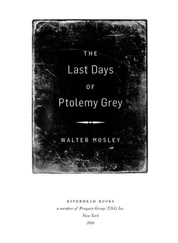Chalmers Johnson - Nemesis - The Last Days of the American Republic
Здесь есть возможность читать онлайн «Chalmers Johnson - Nemesis - The Last Days of the American Republic» весь текст электронной книги совершенно бесплатно (целиком полную версию без сокращений). В некоторых случаях можно слушать аудио, скачать через торрент в формате fb2 и присутствует краткое содержание. Год выпуска: 2006, ISBN: 2006, Издательство: Metropolitan Books, Жанр: Старинная литература, на английском языке. Описание произведения, (предисловие) а так же отзывы посетителей доступны на портале библиотеки ЛибКат.
- Название:Nemesis: The Last Days of the American Republic
- Автор:
- Издательство:Metropolitan Books
- Жанр:
- Год:2006
- ISBN:0805087281
- Рейтинг книги:5 / 5. Голосов: 1
-
Избранное:Добавить в избранное
- Отзывы:
-
Ваша оценка:
- 100
- 1
- 2
- 3
- 4
- 5
Nemesis: The Last Days of the American Republic: краткое содержание, описание и аннотация
Предлагаем к чтению аннотацию, описание, краткое содержание или предисловие (зависит от того, что написал сам автор книги «Nemesis: The Last Days of the American Republic»). Если вы не нашли необходимую информацию о книге — напишите в комментариях, мы постараемся отыскать её.
Nemesis: The Last Days of the American Republic — читать онлайн бесплатно полную книгу (весь текст) целиком
Ниже представлен текст книги, разбитый по страницам. Система сохранения места последней прочитанной страницы, позволяет с удобством читать онлайн бесплатно книгу «Nemesis: The Last Days of the American Republic», без необходимости каждый раз заново искать на чём Вы остановились. Поставьте закладку, и сможете в любой момент перейти на страницу, на которой закончили чтение.
Интервал:
Закладка:
In the wake of 9/11, a new threat to civilians in Iraq and Afghanistan materialized in the form of random killings by America’s often poorly led and unaccountable armed forces. These victims were “shot by snipers, strafed by helicopters, buried under the rubble of their houses by bombs, incinerated by fire, and left to rot in the streets of cities like Fallujah [Iraq] to be gnawed on by dogs.” 54The military keeps no public record on their numbers—what Boston Globe journalist Derrick Jackson calls “this atrocity of silence”—but the evidence indicates that in Iraq in the first years after the invasion such killings by Americans amount to between twice and ten times the people slain by insurgents’ bombs.
On June 2, 2005, the Iraqi Interior Ministry announced that, over the previous eighteen months, insurgent violence had claimed the lives of some 12,000 civilians, whereas the estimates of the numbers killed by the American military ranged from a low of 21,000 to over 40,000. 55In July 2005, Dr. Hatim al-Alwani, head of the Iraqiyun humanitarian organization in Baghdad, released his group’s estimate that the total number of Iraqis killed from all causes since the U.S. invasion was 128,000, including those who died in the U.S. assaults on Fallujah. A year later, the American public began slowly to awaken to the U.S. military’s lax discipline in using lethal force against civilians. Serious cases of out-of-control marines executing the elderly, women, and children at Haditha, Ishaqi, and elsewhere amounted to the equivalent in Iraq of the My Lai massacre during the Vietnam War. 56
William Langewiesche, a national correspondent for the Atlantic Monthly, wrote from Baghdad, “However vicious or even sadistic the insurgents may be, they are acutely aware of their popular base, and are responsible for fewer unintentional ‘collateral’ casualties than are the clumsy and overarmed American forces.” 57Dahr Jamail, one of the BBC’s correspondents in Iraq, reported, “Coalition and Iraqi security forces may be responsible for up to sixty percent of conflict-related civilian deaths in Iraq—far more than are killed by insurgents, confidential records obtained by the BBC’s Panorama programme reveal.... One of the least reported aspects of the U.S. occupation of Iraq is the oftentimes indiscriminate use of airpower by the American military.” 58
The American press only rarely, and then usually anecdotally, describes the deaths of civilians killed by American troops. American newspapers and television broadcasts routinely remove pictures of non-combatants killed by U.S. forces even though they do not flinch from showing the bodies of people killed by insurgents. One reason may be surmised from an October 2001 set of instructions a Florida newspaper issued to its staff: “DO NOT USE photos on page 1A showing civilian casualties from the war on Afghanistan. .. . DO NOT USE wire stories that lead with civilian casualties. . . . They should be mentioned further down in the story. If the story needs rewriting to play down the civilian casualties, DO IT.” 59The American press has similarly never reported on the nightly use of “flash bombs” fired by Apache helicopters to light up the fields along the Tigris and Euphrates Rivers. These high-tech American bombs have burned thousands of acres of fields and decimated groves of date palms. Hovering helicopters have also made it impossible for Iraqis to sleep on rooftops in the sweltering summertime, as was their custom in order to escape the stifling heat. 60
There are no “official” statistics on this mayhem because, as former Centcom commander General Tommy Franks put it, “We do not do body counts.” (Franks was speaking of the war in Afghanistan but also making policy for the subsequent war in Iraq.) Such a statement signaled to the civilian populations of Afghanistan and Iraq that the United States did not care how many local citizens it killed. However, as Maria Ruzicka, an American peace activist who was killed on April 16, 2005, on the road to Baghdad International Airport, had discovered, it is also a lie. The U.S. military does do body counts, but only publicizes them when they are of propaganda value to the American side. 61
American soldiers and contractors working in the war zones are authorized to use lethal force at their own discretion whenever they feel threatened. The soldiers are unaccountable for their acts to any authority except their military superiors, and the contractors are, so far as I can ascertain, simply unaccountable. The U.S. military itself invariably conducts its own investigations into any charges of excessive use of force, and these investigations are normally oriented toward covering up what happened. As one knowledgeable human rights observer in Iraq put matters, “The American troops have adopted an atmosphere of impunity. Arrogant and violent behavior goes unpunished and continues.” 62Patrick Cockburn, a journalist for the Independent of London with long experience in Iraq, adds, “Every Iraqi has stories of friends or relatives killed by U.S. troops for no adequate reason. Often they do not know if they were shot by regular soldiers or by members of western security companies whose burly employees, usually ex-soldiers, are everywhere in Iraq.” 63
In Afghanistan, there are relatively few unofficial estimates of the numbers of civilians killed by U.S. forces and no official ones. In December 2001, Robert Fisk, the veteran journalist of the Islamic world, reported that high-level bombing of Afghan villages by B-52s had claimed some 3,700 victims. 64After that time, there were mostly reports of individual deaths, including a Red Cross account of 52 people, half of them children, killed by bombing in eastern Afghanistan on December 29, 2001; 16 villagers killed on January 23, 2002, by U.S. forces at Hazar Qadam; and 14, including women and children, killed when a U.S. jet attacked a vehicle on March 6, 2002, in eastern Paktia province.
On June 30, 2002, a U.S. AC-130 gunship attacked a cluster of six villages a hundred miles north of Kandahar in Uruzgan province. In the village of Karakak, the aircraft sprayed a wedding ceremony being held at night to escape the heat with hundreds of bullets. The Americans repeatedly claimed that their planes had come under antiaircraft fire and that they were only retaliating. However, a U.S. Special Forces investigation on the ground found no antiaircraft gun or expended cannon shells. What they did find were forty-eight bodies, all but three women and children. Afghan officials believed that the United States either relied on intelligence from Afghan informers who were perhaps settling personal scores or were simply shooting up the area in hopes of killing Mullah Mohammed Omar, the leader of the overthrown Taliban regime, who was raised less than a mile from the village. The Americans later admitted the raid was a mistake and promised to build schools, roads, and hospitals and drill wells in the district but there is no evidence that they ever did so. 65The “independent” Afghan government of President Hamid Karzai has repeatedly asked the U.S. military to obtain Afghan authorization before carrying out attacks, but American officials up to and including President Bush have refused all such requests. 66
American killings of civilians have been on a far greater scale in Iraq because that country is more populous and urbanized, and the war and insurgency there have proved much more intense than in Afghanistan. On October 28, 2004, physicians and other researchers affiliated with Johns Hopkins and Columbia Universities in the United States and the al-Mustansiriya University in Baghdad published a report in the British medical journal the Lancet that concluded, “The risk of death from violence [in Iraq] in the period after the invasion was fifty-eight times higher than in the period before the war.... We think that about 100,000 excess deaths, or more, have happened since the 2003 invasion of Iraq. Violence accounted for most of the excess deaths, and air strikes from coalition forces accounted for most violent deaths. . . . Most individuals reportedly killed by coalition forces were women and children.” 67
Читать дальшеИнтервал:
Закладка:
Похожие книги на «Nemesis: The Last Days of the American Republic»
Представляем Вашему вниманию похожие книги на «Nemesis: The Last Days of the American Republic» списком для выбора. Мы отобрали схожую по названию и смыслу литературу в надежде предоставить читателям больше вариантов отыскать новые, интересные, ещё непрочитанные произведения.
Обсуждение, отзывы о книге «Nemesis: The Last Days of the American Republic» и просто собственные мнения читателей. Оставьте ваши комментарии, напишите, что Вы думаете о произведении, его смысле или главных героях. Укажите что конкретно понравилось, а что нет, и почему Вы так считаете.











